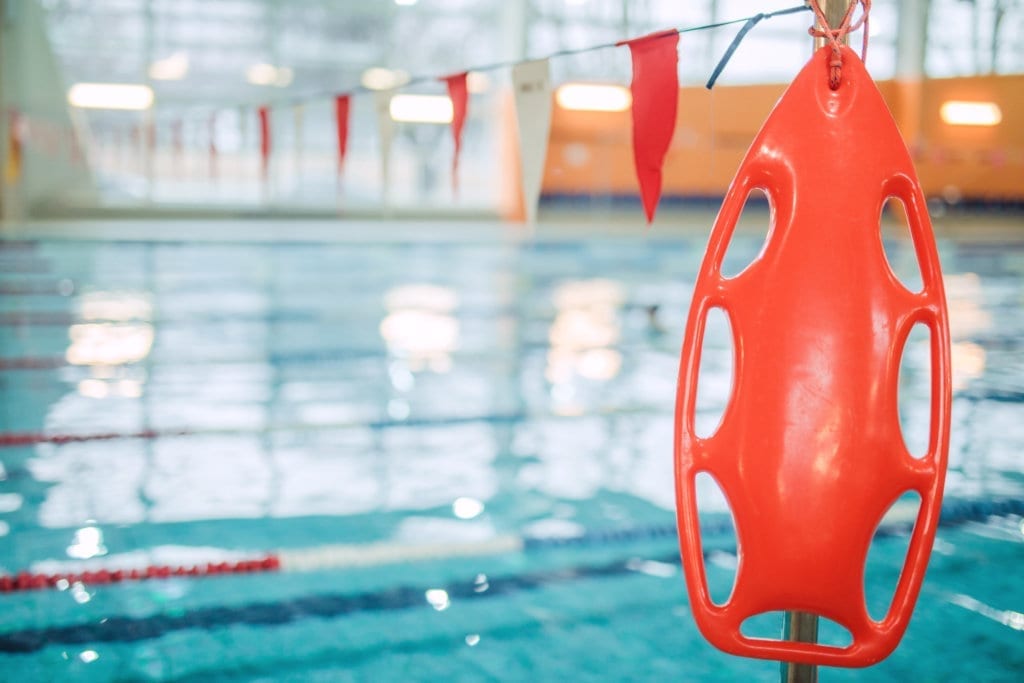A 24-year-old lifeguard developed a persistent cough, chest tightness, progressive shortness of breath, eye irritation and headaches that would worsen toward the end of his workday. In December 1998, the American Journal of Public Health published a study that found the lifeguard and 32 of his peers had developed granulomatous lung disease, known as “Lifeguard Lung,” from working in an indoor swimming pool.
The facility closed the pool and installed a new air ventilation system in hopes of fixing the air quality issue that was causing the lung disease. Yet, when the pool re-opened, the lifeguards’ symptoms returned. It turned out that the problem wasn’t coming only from the air quality, but also from toxins in the pool water itself.
The Problem: Over Chlorination and Disinfection By-Products
After conducting additional research, closing and re-opening the pool twice and surveying all pool employees, researchers concluded that exposure to over-chlorinated indoor pools for extended periods of time increases the likelihood of developing granulomatous pneumonitis, especially if the pool uses water-spray features. They also concluded that improving air ventilation systems in indoor pools does not fix the problem — the problem lies in the amount of chlorine and chlorine-related disinfection by-products.
Disinfection by-products, or DBPs, form when outside pollutants such as sweat, urine, dirt, oils and lotions are brought into pool water and react to the chlorine in the water. These contaminants combine with chlorine already present in the pool to create combined chlorines, or chloramines, which are a common DBP found in pools and spas. Chloramines are not effective at sanitizing the pool, and the toxins they produce can cause irritation of the skin, eyes and lungs.
In addition to asthma and allergies, DBPs can contribute to Lifeguard Lung, also known as granulomatous pneumonitis. Lifeguard Lung is a disease that’s caused by the immune system in the lungs “turning on” in reaction to an inhalant. This disease is likely the result of breathing bacteria and volatile organic compounds, or VOCs, suspended in water droplets small enough to be inhaled by the lungs.
What Can Your Aquatics Facility Do About It?
If you want to protect your swimmers, staff and patrons from the risk of lung diseases and other pool-related ailments, there are a few steps you can take to improve your facility’s air and water quality and provide a safe and healthy environment.
To proactively care for your facility’s pool and prevent DBPs from forming, here are a few steps you can take:
- Making sure that your pool is being shocked on a regular basis and the proper chlorine levels are being maintained.
- Prevent over chlorination in your pool by adding a secondary or supplemental sanitation system, such as advanced oxidation, also known as AOP.
- Ensure all patrons shower before getting in the pool to reduce contaminants added into the water.
- Open doors and windows to improve air circulation in your facility.
- Make sure your filter is working properly and being regularly cleaned and replaced as needed.
An Advanced Solution: AOP Pool Treatment
Hydroxyl-based AOP pool systems are a safe, simple, eco-friendly and healthy way to improve your aquatics facility’s air and water quality and prevent disease and irritation while reducing chemical consumption. AOP systems eliminate disinfection by-products while sanitizing and oxidizing pool water to give your facility the best water that feels softer, smells better and looks clearer.
AOP pool water treatment can prevent Lifeguard Lung by destroying organic compounds such as pathogens and bacteria in the water, even those that are chlorine-resistant. Advanced oxidation systems also help protect against Lifeguard Lung by preventing DBPs from forming and creating a healthier environment for aquatics facilities.
The system works by injected hydroxyls, the most potent oxidizers available for pools, into the pool plumbing. These hydroxyls destroy contaminants in the pool water making it safe, healthy, and clear while allowing aquatics facilities to dramatically reduce their chemical consumption. AOP systems are the most advanced and simplest way to protect aquatics facility patrons and staff and provide the best air and water quality possible.
For more information about how your aquatics facility can benefit from AOP pool water treatment, check out some of our testimonial reviews from customers that have improved their facilities with Clear Comfort AOP.
*Originally published on June 18, 2015
Claire McDaniel
Claire is a swimming and nutrition expert who loves to educate and motivate others to healthier living. She swam competitively for 18 years, is a five time All-American, a Division I National Champion, was co-captain of Team USA at the 2007 World University Games and was named a finalist for the NCAA Woman of the Year Award. She also has a master’s degree in nutrition and is a Registered Dietitian Nutritionist. After swimming, Claire started coaching and has coached all over the US and even in Switzerland! Her experience and expertise about both swimming and health fuel her passion for Clear Comfort’s mission – to make swimming a 100 percent healthy activity for swimmers, coaches, lifeguards and pool staff.



